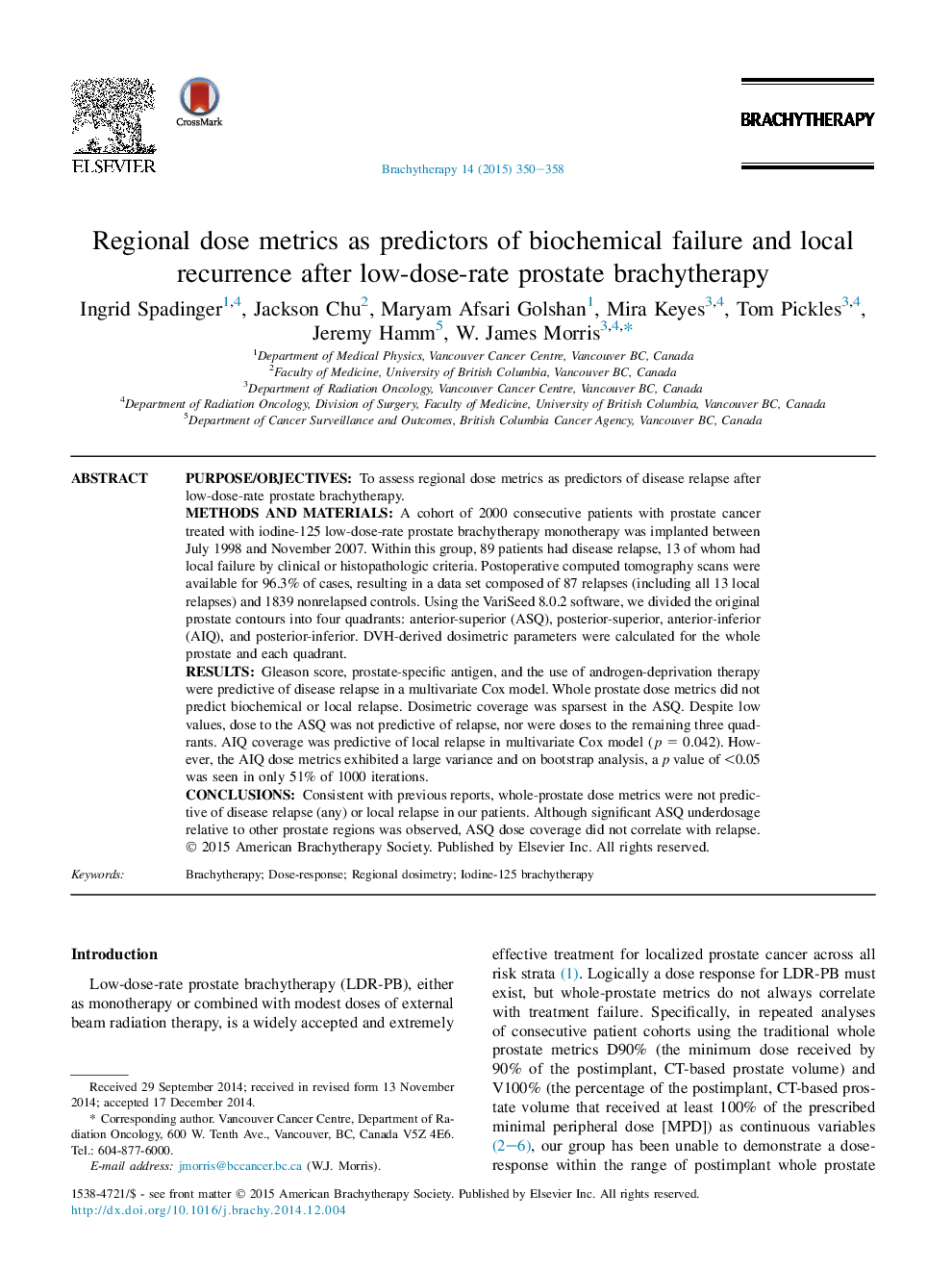| Article ID | Journal | Published Year | Pages | File Type |
|---|---|---|---|---|
| 3976788 | Brachytherapy | 2015 | 9 Pages |
Purpose/objectivesTo assess regional dose metrics as predictors of disease relapse after low-dose-rate prostate brachytherapy.Methods and MaterialsA cohort of 2000 consecutive patients with prostate cancer treated with iodine-125 low-dose-rate prostate brachytherapy monotherapy was implanted between July 1998 and November 2007. Within this group, 89 patients had disease relapse, 13 of whom had local failure by clinical or histopathologic criteria. Postoperative computed tomography scans were available for 96.3% of cases, resulting in a data set composed of 87 relapses (including all 13 local relapses) and 1839 nonrelapsed controls. Using the VariSeed 8.0.2 software, we divided the original prostate contours into four quadrants: anterior-superior (ASQ), posterior-superior, anterior-inferior (AIQ), and posterior-inferior. DVH-derived dosimetric parameters were calculated for the whole prostate and each quadrant.ResultsGleason score, prostate-specific antigen, and the use of androgen-deprivation therapy were predictive of disease relapse in a multivariate Cox model. Whole prostate dose metrics did not predict biochemical or local relapse. Dosimetric coverage was sparsest in the ASQ. Despite low values, dose to the ASQ was not predictive of relapse, nor were doses to the remaining three quadrants. AIQ coverage was predictive of local relapse in multivariate Cox model (p = 0.042). However, the AIQ dose metrics exhibited a large variance and on bootstrap analysis, a p value of <0.05 was seen in only 51% of 1000 iterations.ConclusionsConsistent with previous reports, whole-prostate dose metrics were not predictive of disease relapse (any) or local relapse in our patients. Although significant ASQ underdosage relative to other prostate regions was observed, ASQ dose coverage did not correlate with relapse.
